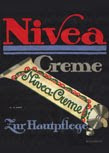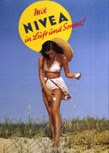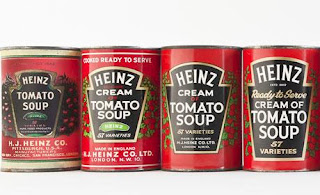The company was established as Pleasant Company in 1984, founded by Pleasant T. Rowland, a former renowned educator and author of educational materials. When Pleasant T. Rowland started the Pleasant Company in 1984, she announced that she was going to make dolls for girls between 8 and 12 years of age that were both educational and dealt with the topic of girlhood. Her idea found its root during a Christmas shopping trip in 1984, while trying to buy dolls for her two nieces. She felt her only options were Barbie dolls or Cabbage Patch Kids, neither of which appealed to her. On the one hand Barbie dolls encourage girls to grow up and be adults, whereas the Cabbage Patch Kids promoted motherhood, but neither of them focused on girlhood itself. doll maker Pleasant T. Rowland realized that most dolls either depicted girls assuming the role of adults or mothers and none of them dealt with girls just being girls.

The catalog of the brand was made by the first three characters (dolls): Samantha Parkington (a girl in the early 20th century), Kirsten Larson (a Swedish immigrant) and Molly McIntire (a girl from the Midwest during the Second World War). Today it includes:
Kirsten Larson: Kirsten Larson is one of the original three American Girl dolls released, and hers is the only story that hasn’t been changed. She is a Swedish immigrant whose family became pioneers in Minnesota in the mid-1800s.
Samantha Parkington: Samantha Parkington, one of the three original American Girl dolls, is also one of the most popular. She lives a life of luxury in the first years of the 20th century.
Molly McIntire: Molly McIntire, who grows up during World War II, was also one of the three original American Girls. Her father is in Europe aiding the war effort, and Molly must adapt to her changing world.
Nellie O’Malley: Although Nellie O’Malley is an Irish servant and Samantha is a wealthy little girl, the two are friends.
Addy Walker: Addy Walker is an escaped slave fleeing north to Philadelphia with her mother near the end of the Civil War. Addy has been produced since the early ‘90s, prior to the Mattel era.
Kaya: Kaya, a young Native American in the Nez Perce tribe, lives in the West in 1764. The doll’s image and dress are faithful to Nez Perce culture.
Josefina Montoya: Josefina Montoya lives on a New Mexico rancho in the 1820s, just as Americans begin to settle and trade in the area. She was the first Hispanic doll in the American Girl line of dolls, and she was the last doll created before Pleasant Rowland left the company.
Felicity Merriman: Felicity Merriman is a colonial girl who lives just before hostilities erupt in the Revolutionary War. She was the first doll to have a flesh-colored body.
Kit Kittredge: Kit Kittredge lives in the Midwest during the Great Depression. Her family struggles with poverty after her father loses his job.
Trivia:
In 2005, American Girl teamed with Julia Roberts' Red Om production company and to create the first American Girl direct-to-video movie, Samantha: An American Girl Holiday. The film spawned a franchise that was followed by Felicity: An American Girl Adventure (2005), Molly: An American Girl on the Home Front (2006), along with the 2008 theatrically released film Kit Kittredge: An American Girl.
American Girl Place is a store that sells American Girl dolls, clothes, and accessories. The flagship and first store debuted in Chicago followed by stores in New York City, New York and Los Angeles.
American Girl launched Innerstar University, an online virtual world featuring the My American Girl contemporary doll line, on July 13, 2010. Access to the online world is via a Campus Guide (available separately for a limited time, normally bundled with purchase of one of the 44 My American Girl dolls which contains an access code for the creation of a doll avatar that then navigates the various games, shops, and challenges of the virtual campus of Innerstar U.




















































